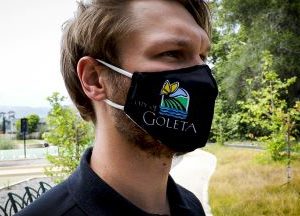
Face coverings or masks reduce the spread of coronavirus, especially when combined with physical distancing and frequent hand washing. Coronavirus spreads when an infected person speaks, sneezes, or coughs within 6 feet of others. It is possible for you to have the virus and spread it even if you have no symptoms and feel well. Wearing a face mask protects people around you.
When should I wear a face covering?
You must wear a face covering or mask whenever you are outside of your home in public settings, including:
- Outdoors, if you can’t stay 6 feet away from others
- At work, when near other people or in common areas
- Inside any indoor public space including grocery or retail stores
- When waiting in line
- When getting health care
- On public transportation or when ride-sharing
When can you take off your mask?
There are times when it’s alright to take your mask off when you’re away from home, such as:
- When eating or drinking
- When you’re not sharing a common area, room or enclosed space with others
- When outdoors in public and can stay six feet from others
- If a hearing-impaired person needs to read your lips
- If wearing a face covering imposes a risk to you at work – for example, if it could get caught in machinery
- When you are getting a service to the nose or face
What is a face covering and how should it be worn?
A face covering is a material that covers the nose and mouth. Don’t wear your mask under your nose or just on your chin. A mask is only effective if it covers both ways you breathe. It can be secured to the head with ties or straps or simply wrapped around the lower face. A mask can be made at home using a scarf or t-shirt. It should be made of tightly woven fabric. Face coverings with one-way valves are discouraged as they permit respiratory droplets that may easily escape, placing others at risk.
Who shouldn’t wear a mask?
- Children under 2 years old
- Anyone with respiratory issues where it would impede their breathing
- Anyone unable to remove the mask without help
- Anyone with a medical condition, mental health condition, or disability that does not allow them to wear a mask
How should I care for a cloth face covering?
It’s a good idea to wash your cloth face covering frequently, ideally after each use, with detergent and hot water. If you must re-wear your cloth face covering before washing, wash your hands immediately after putting it back on and avoid touching your face. Discard cloth face coverings that:
- Cannot stay on the face
- Do not cover the nose and mouth
- Have stretched out or damaged ties or straps
- Have holes or tears in the fabric
Read the official guidance from the California Department of Public Health: State Guidance on Face Coverings.
As a reminder, watch the City’s safety video featuring our Emergency Services Coordinator, Michael Baris, which aims to clear up some confusion about how and when to wear face coverings. The video is followed with a Spanish version that is narrated by Natalia Rios, an Emergency Services aide.


